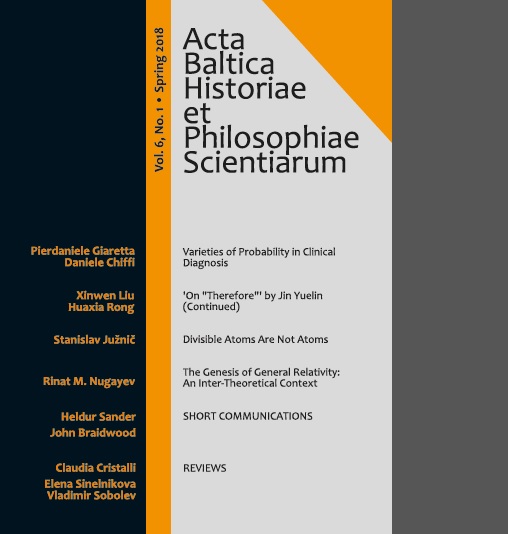Divisible Atoms Are Not Atoms
Divisible Atoms Are Not Atoms
Author(s): Stanislav JužničSubject(s): Philosophy, History of Philosophy, Philosophical Traditions, Ancient Philosphy, Early Modern Philosophy, Philosophy of Science, 17th Century, 18th Century
Published by: Tallinna Tehnikaülikooli õiguse instituut
Keywords: 17th–18th centuries; China; Confucian distrust in atoms; history of chemistry; history of exact sciences; Jesuits, scientific-industrial revolutions;
Summary/Abstract: The aim of the article is to help change the self-contradictory term ‘atom’. In this project, the support of modern Chinese scientists is expected. The contributions of Chinese to some researches in sciences are focused on finding out the preferences and most frequent stages of (European) paradigms involved in Chinese networks. Some predictions of future interests of Chinese sciences are provided. The Chinese holistic Confucian distrust in atoms is discussed as a possible new paradigm which could rename atoms as the destructible divisible entities of future physics, and with more difficulties also of chemistry.The word ‘atom’ meaning an indivisible not a compound entity is basically in contradiction with the characteristics of the item it is supposed to describe. The suffix ‘a (ἄ)’ provides a negation in Ancient Greek language. The suffix should be omitted to use tom (τομος) to manage the actual situation of a-toms (toms) as compound of elementary particles. In the late 19th century after the European Spring of Nations, two basically different concepts of atoms of chemists and physicists accomplished a kind of symbiosis. The suggestion is put forward that while indivisible atoms soon became contradictions in physics, they still retain some value in chemistry, which should be important for the panning strategy of attempt to change the name of atom.
Journal: Acta Baltica Historiae et Philosophiae Scientiarum
- Issue Year: 6/2018
- Issue No: 1
- Page Range: 55-96
- Page Count: 42
- Language: English

